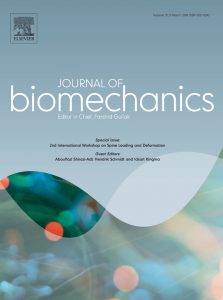Publications

Biomechanical and viscoelastic properties of the ankle muscles in men with previous history of ankle sprain
Authors: Pilar Serra-Añó 1 , Marta Inglés 2 , Gemma V Espí-López 1, Núria Sempere-Rubio 1, Marta Aguilar-Rodríguez 1
Affiliations:
- UBIC Research Group, Department of Physiotherapy, Faculty of Physiotherapy, University of Valencia, 46010 Valencia, Spain
- Freshage Research Group, Department of Physiotherapy, Faculty of Physiotherapy, Universitat de València, Centro de Investigación Biomédica en Red Fragilidad y Envejecimiento Saludable (CIBERFES-ISCIII), Fundación Investigación del Hospital Clínico Universitario de Valencia (INCLIVA), 46010 València, Spain
Journal: Journal of Biomechanics - January 2021, Volume 115, 110191 (DOI: 10.1016/j.jbiomech.2020.110191)
-
Field & Applications:
- Medical
- Musculoskeletal disorder
- Injury prevention
- Musculoskeletal rehabilitation
In this study, we aimed to explore the impact of previous history of lateral ankle sprain on the mechanical and viscoelastic properties of the tibialis anterior (TA), peroneus longus (PL) and gastrocnemius lateralis (GL) and medialis (GM) in asymptomatic men. For this purpose, a group of 26 men with previous history of lateral ankle sprain (ASG) and a control group (CG) of 29 healthy counter-parts participated in this study.
Tone, stiffness, elasticity and mechanical stress relaxation time were measured using a myotonometer in a single session. Higher tone was noted for TA and GL in ASG as compared to CG (effect size of Cohen’s d = 0.57 [p = 0.04] and 0.59 [p = 0.04], respectively). Further, stiffness was higher in ASG than in CG for TA (d = 0.56; p = 0.04), PL (d = 0.58; p = 0.04) and GL (d = 0.63; p = 0.02). Stress relaxation time was also lower for the ASG compared to the CG for TA (d = 0.61; p = 0.03), PL (d = 0.55; p = 0.04) and GL (d = 0.68; p = 0.02).
There were no significant differences between groups in elasticity (p > 0.05). GM experienced no significant changes after ankle sprain in any of the variables (p > 0.05). To conclude, previous history of lateral ankle sprain results in higher TA and GL muscle tone. Likewise, these muscles in addition to PL exhibit less deformation against resistance due to their increased stiffness, thus needing a shorter time to restore to their original shape after deformation.
Keywords: Ankle sprain, Elasticity, Muscle tone, Stiffness, Stress relaxation time, Viscoelastic properties.
Men without pain-related symptoms and with a previous history of lateral ankle sprain have higher muscle tone in the periarticular ankle muscles, namely, tibialis anterior and gastrocnemius lateralis, than men with no history of ankle sprain. Likewise, these muscles exhibit a lower deformation under resistance due to greater stiffness and therefore the time required to restore to their original shape following deformation is shorter than in men without previous ankle sprain.
The potential clinical impact of these findings on ankle motor control requires the use of this type of objective procedures to assess the biomechanical and viscoelastic properties in people with previous history of ankle sprain. Our results suggest that specific physical interventions aimed to restore the biomechanical and viscoelastic properties are needed after an ankle sprain in men.


